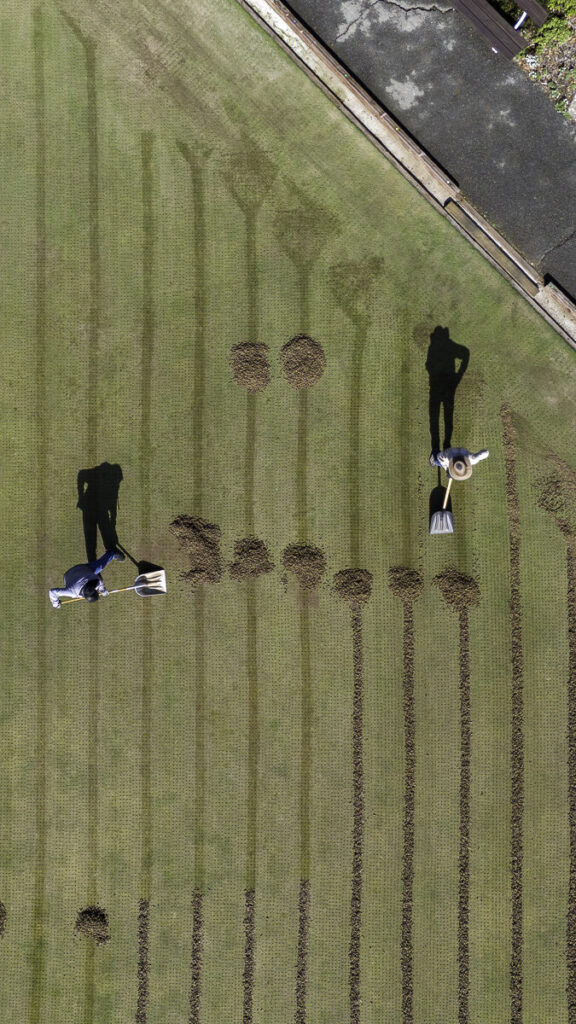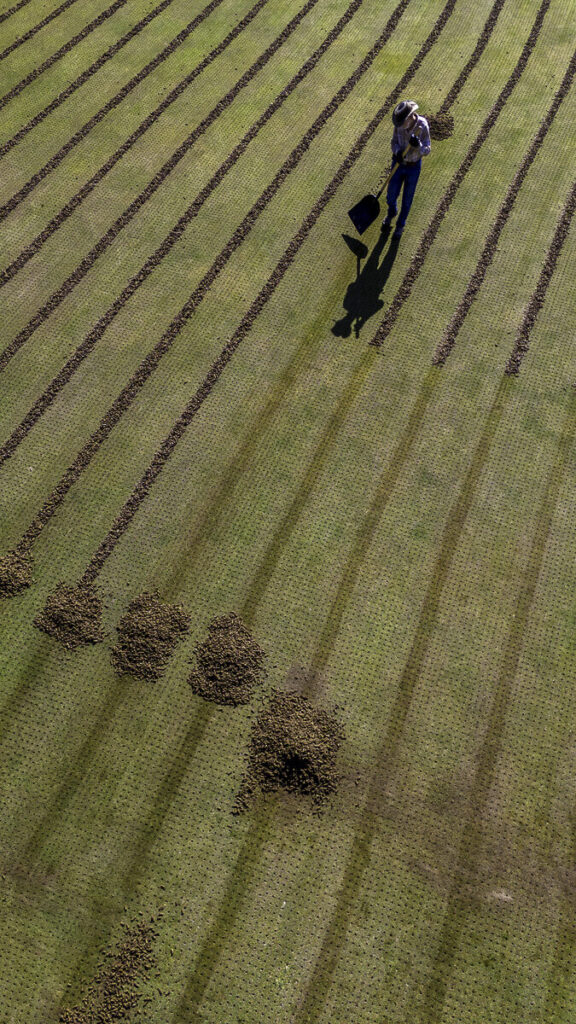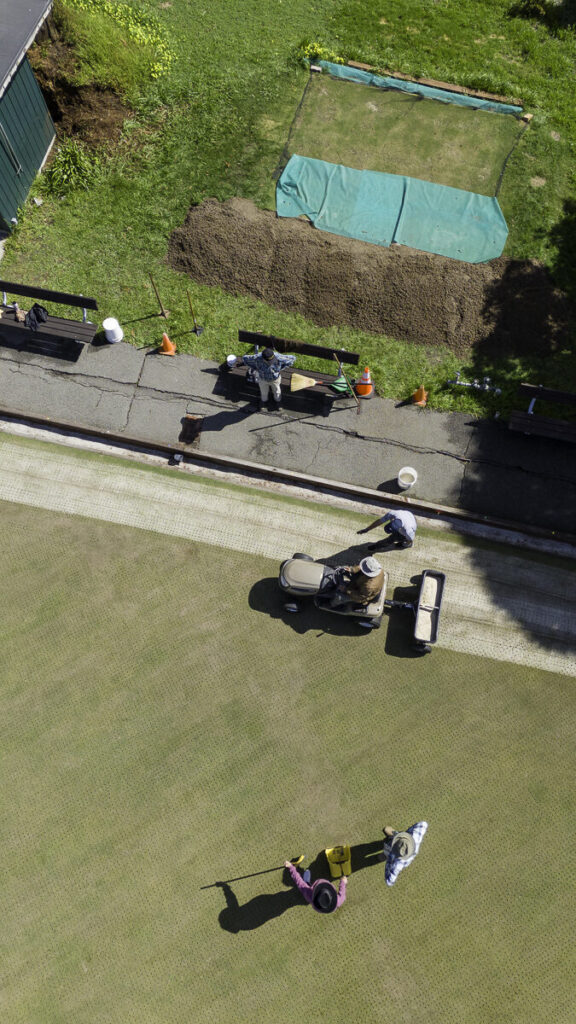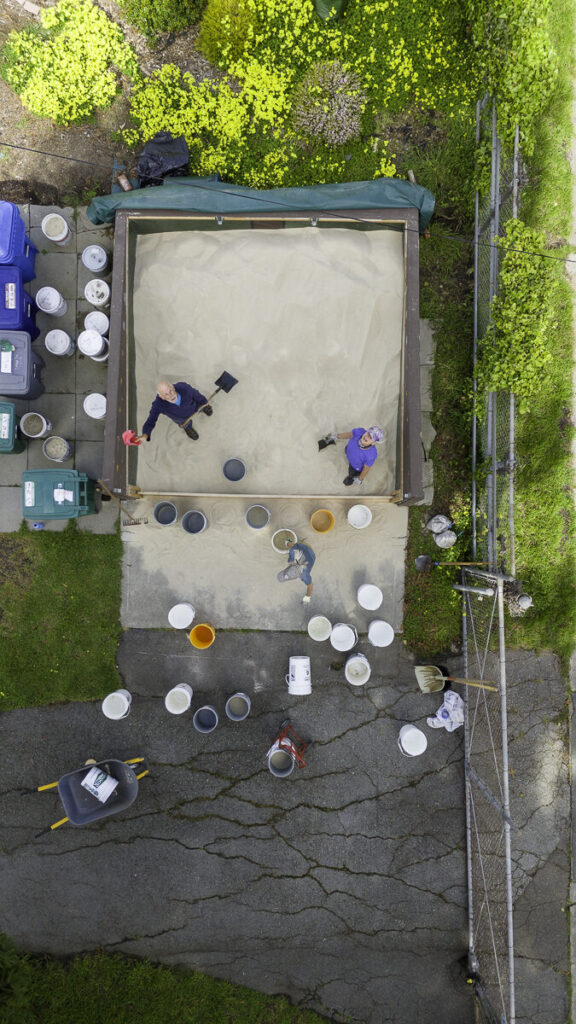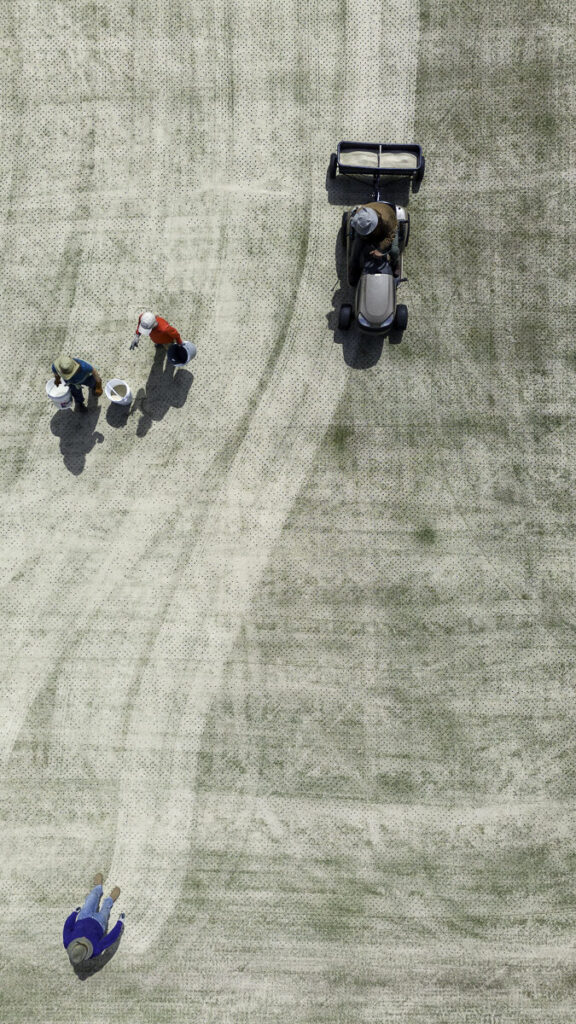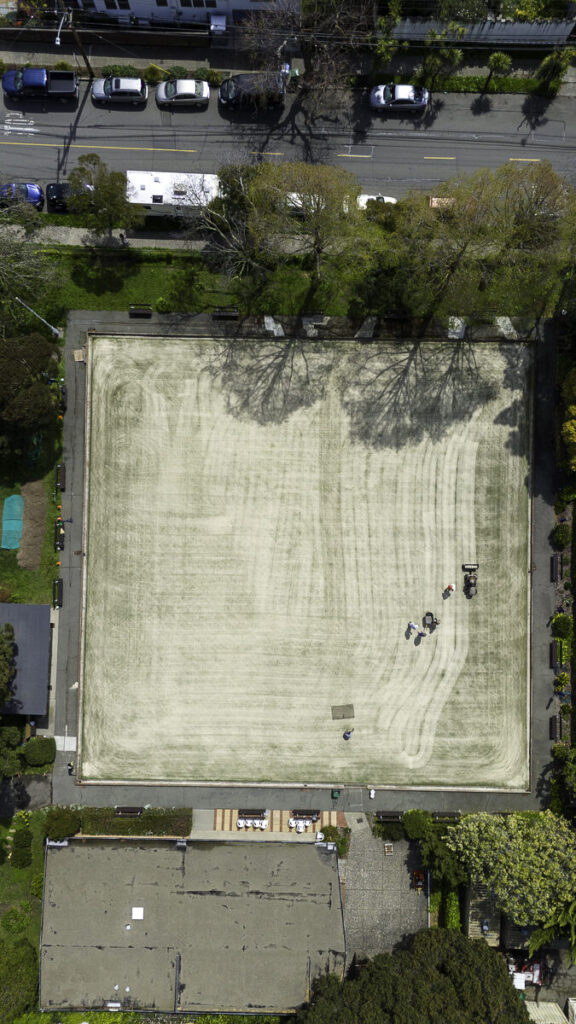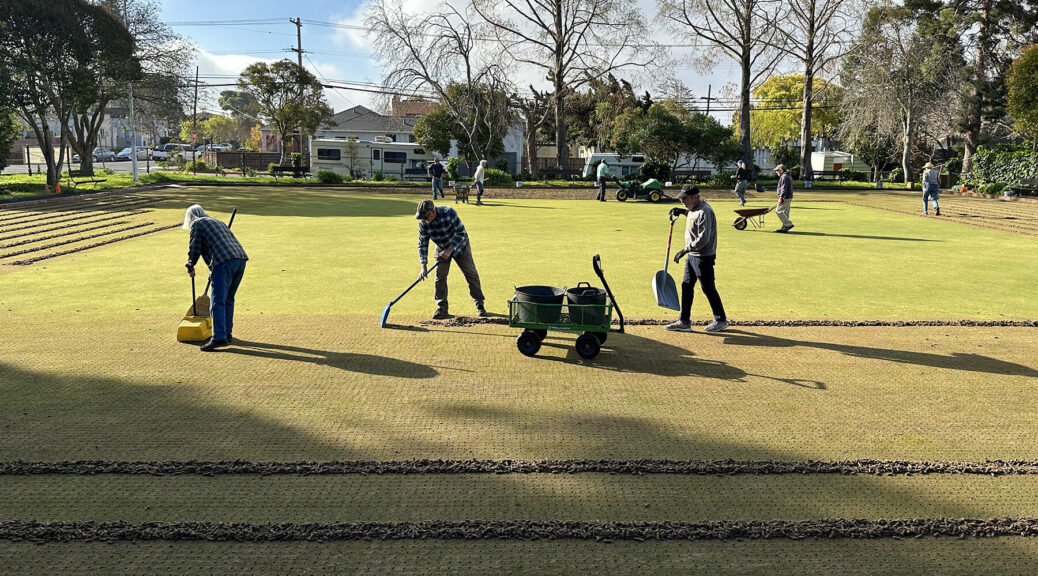Ethan Bortman reports from 7.000 miles away
Once again, I am pleased to report that last Sunday’s drill and fill workday was a huge success. I was amazed when I Facetimed Leslie at 1 PM to view the activity from afar and there was nothing to see other than a few munching on pizza. The work was completed in record time. Very impressive indeed. It is this type of volunteerism and cooperation that enables our green to be the envy of PIMD.
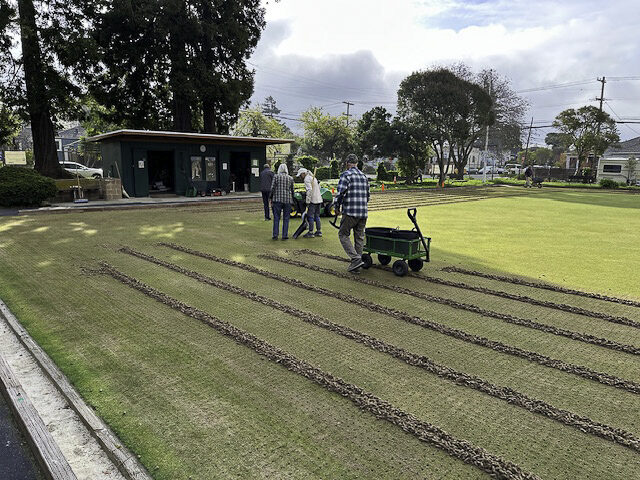


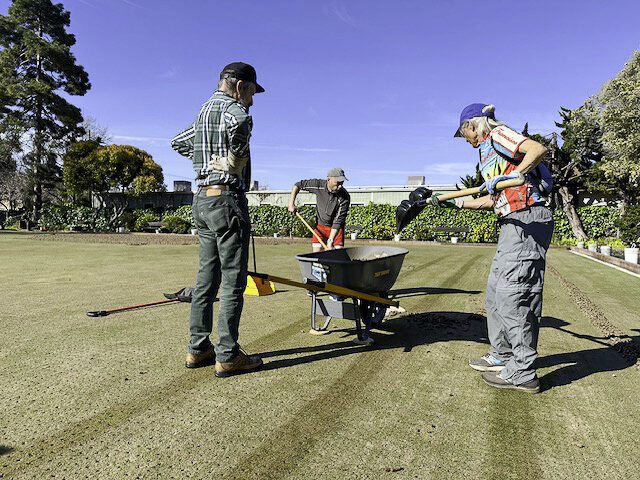
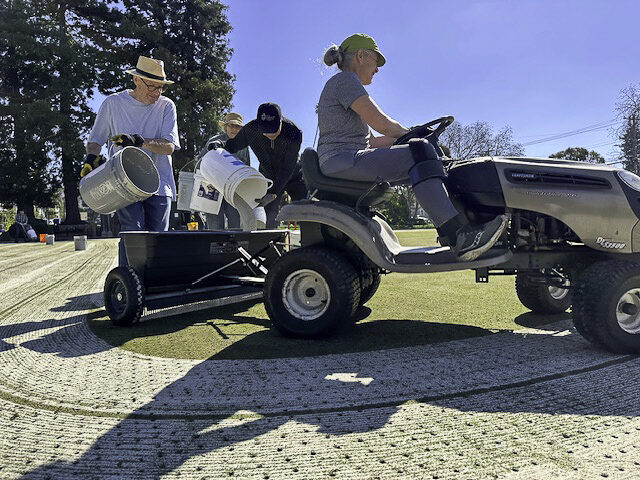
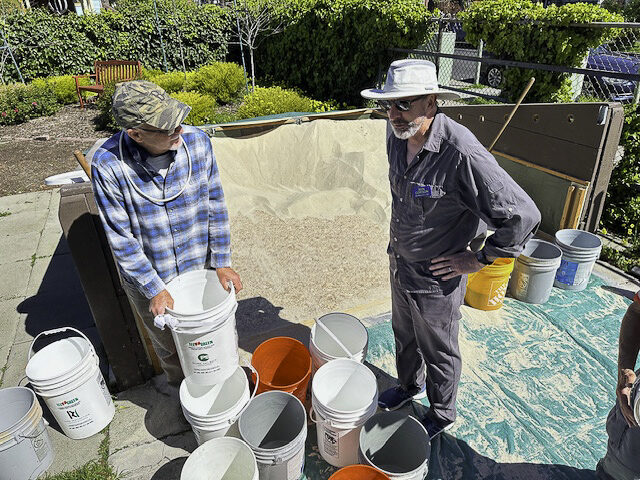
A big shout out to the volunteers (listed in random order and including several who called in sick): Alexandra Terninko, Rolly, Phil Watson, Leslie, the Bentons, Kern, Steve Harris, Annie, Gary S, Chris High, Glenn, Douglas Frey, Martin, Charles, Mike O’, Stephen Ng, Ben Corson, Marty Lorber, Daniel, Mark Baker, Cathy, Tom Birt, and, of course, our four terrific GKs…Patricia, Janie, Judy, and Sarah. If I missed anyone, please let me know.
For those of you who were unable to participate, stay tuned because most likely there will be another workday in the fall.
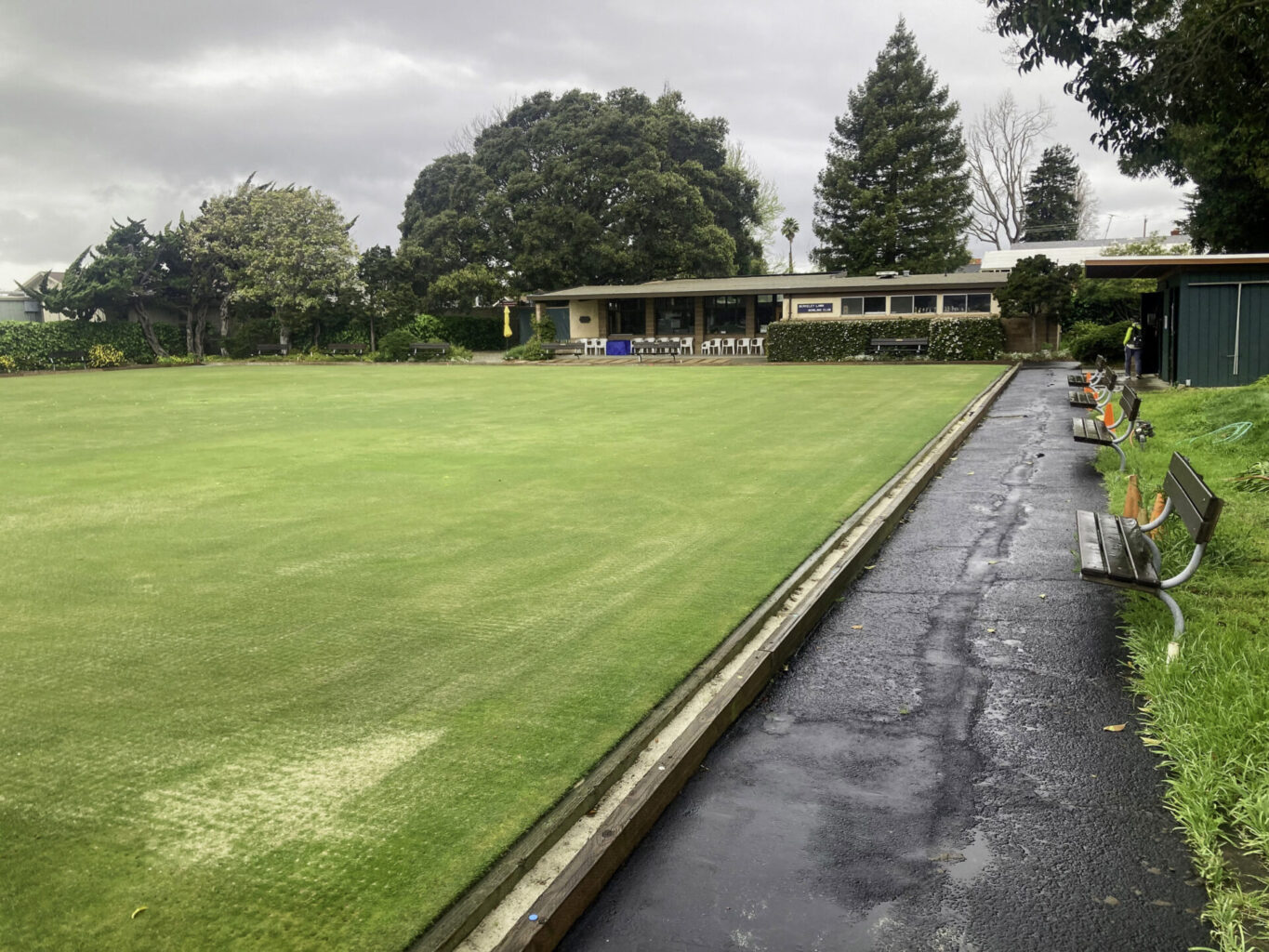
Update: Janie and Patricia just sent a photo of the green from this morning (four days after sanding). The green has received a gentle watering compliments of a cold front and the sand is settling very nicely into the grass – by all accounts a quickly paced recovery is underway.
For more information on this annual maintenance ritual read on.
More on Drill & Fill
Every spring, our club goes through the surprising exercise of dumping tons of sand on the bowling green. There is method to this madness. Hollow tining is a vital part of keeping bowling greens in top shape. It involves removing small turf plugs (around 200,000 of them) to make channels for air, water, and nutrients to get deeper into the soil. This helps the grass roots breathe better and absorb moisture and oxygen more easily. After hollow tining with 5/8” tines spaced a few inches apart, the green gets a special sand dressing. This surprisingly expensive sand is screened to make it small enough to fit in the holes and has just the right shape to do the job well. The sand fills the holes, makes the soil better, improves drainage, and protects new grass shoots.
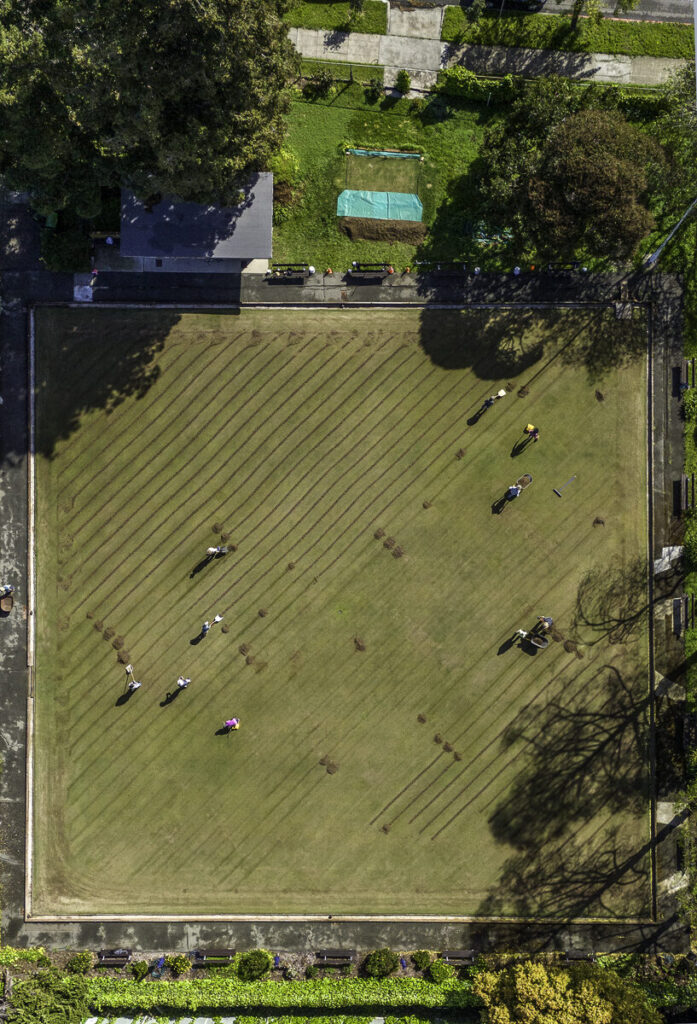
In a typical Spring Workday morning, our volunteers do a marvelous job of removing all the turf plugs extracted from the green by the motorized hollow tining equipment. This is followed by a bucket brigade carrying literally tons of sand from the storage shed to the green and loading it into manual and motorized spreaders (there is no need to visit the gym at the end of the workday!) Various devices ranging from metal mesh pulled by a garden tractor to handheld brooms and rakes are then used to persuade the sand to fill the holes caused by the tining.
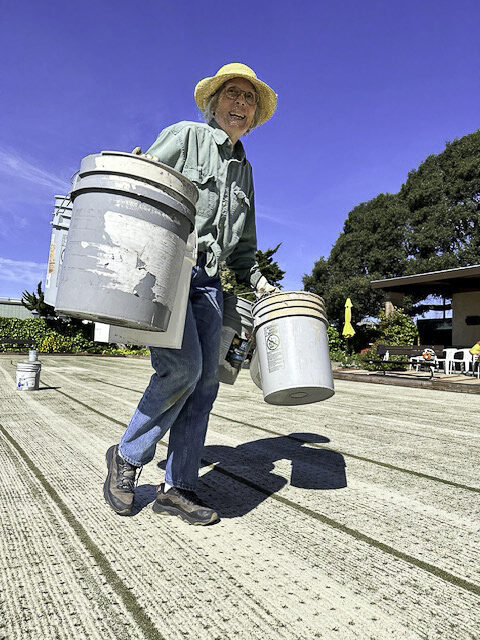
Regular hollow tining and top-dressing makes the green smoother and more consistent, so the bowls roll better. It also stops thatch from building up, makes the soil healthier, helps new grass grow faster, keeps diseases away, and keeps the roots in the right shape. The green might look a bit rough at the end of a Spring Workday, but it gets better quickly and will be ready for play in just a few weeks.
